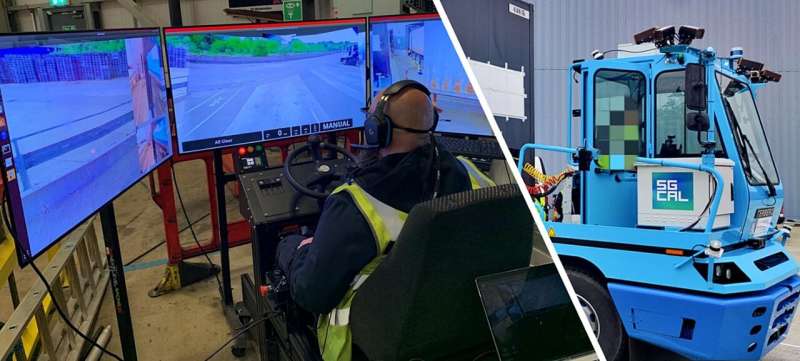This article has been reviewed according to Science X's editorial process and policies. Editors have highlighted the following attributes while ensuring the content's credibility:
fact-checked
trusted source
proofread
Study explores how we interact with remote drivers

Newcastle University research is helping shed light on the important interaction between users and remote drivers that oversee the operation of automated vehicles.
Automated vehicles (AVs), also known as driverless vehicles, hold the promise of transforming mobility, offering numerous benefits such as safer roads, increased accessibility, enhanced productivity, economic growth, and contributions to decarbonization.
While lower-level automation systems provide assistance to drivers, higher-level automation (SAE Level 4) allows vehicles to operate without on-board driver input. A crucial failsafe mechanism for Level 4 Automated Vehicles (L4 AV) involves remote driving through a teleoperation system controlled by a remote driver. However, understanding end-users' needs and requirements in this context remains a significant research gap.
Publishing their findings in Transportation Research Part F: Traffic Psychology and Behaviour, an international research team led by Newcastle University studied the preferences of potential end-users for a 5G-enabled L4 AV with a remote teleoperation system as a failsafe mechanism.
The researchers conducted qualitative semi-structured interviews with 29 potential end-users to explore the interaction between drivers, automation, and remote drivers in L4 AVs.
The results show that end-users support the failsafe feature of remote driving, envisioning positive applications for night driving, long distances, motorways, and more. The exploration of L4 AV as a "designated driver" to reduce alcohol-impaired driving garnered interest, and concerns were raised about the reliability of the teleoperation system, remote driver performance, 5G network connection, cybersecurity, and privacy issues.
The findings reveal that end-users expressed a desire to understand how remote teleoperator drivers operate the vehicle remotely, highlighting the importance of clear communication.
The study participants also indicated that they prefer drivers to be focused and not multitasking during teleoperation. In addition, they require remote drivers based in the same country as the L4 AV to prevent issues such as unfamiliar road layouts, different traffic rules, cultural driving style variations, liability concerns, and time differences from affecting performance.
The future of automated mobility
Study lead author, Dr. Shuo Li, Research Associate at Newcastle University's School of Engineering, said, "As we journey into the realm of connected and automated vehicles, our research provides comprehensive insights and highlights key aspects of the new driver-automation-remote driver interaction in 5G-enabled Level 4 Automated Vehicles. Offering end-users a transparent, qualified, and location-aware remote driving experience is not only an added feature but also crucial for safety and acceptance of automated mobility."
Study co-author, Professor Phil Blythe CBE, Professor of Intelligent Transport Systems, and head of the Future Mobility Group, Newcastle University, added, "Newcastle University and its regional partners are at the leading edge of investigating what is needed to practically and safely introduce Automated Vehicles and in particular the challenge of Connected and Automated Logistics—which will deliver significant benefits to the region and the sector in general.
"These research findings on the use of remote, teleoperations to supervise driverless AVs is a critical cog in the automation machine and will, through our ongoing work, also inform on workload and thus potentially how many vehicles an individual teleoperator can safely handle. Overall this is part of our wider objective to ensure the Newcastle University and the NE remain at the forefront of automation and future logistics."
More information: Shuo Li et al, Remote driving as the Failsafe: Qualitative investigation of Users' perceptions and requirements towards the 5G-enabled Level 4 automated vehicles, Transportation Research Part F: Traffic Psychology and Behaviour (2023). DOI: 10.1016/j.trf.2023.11.018




















